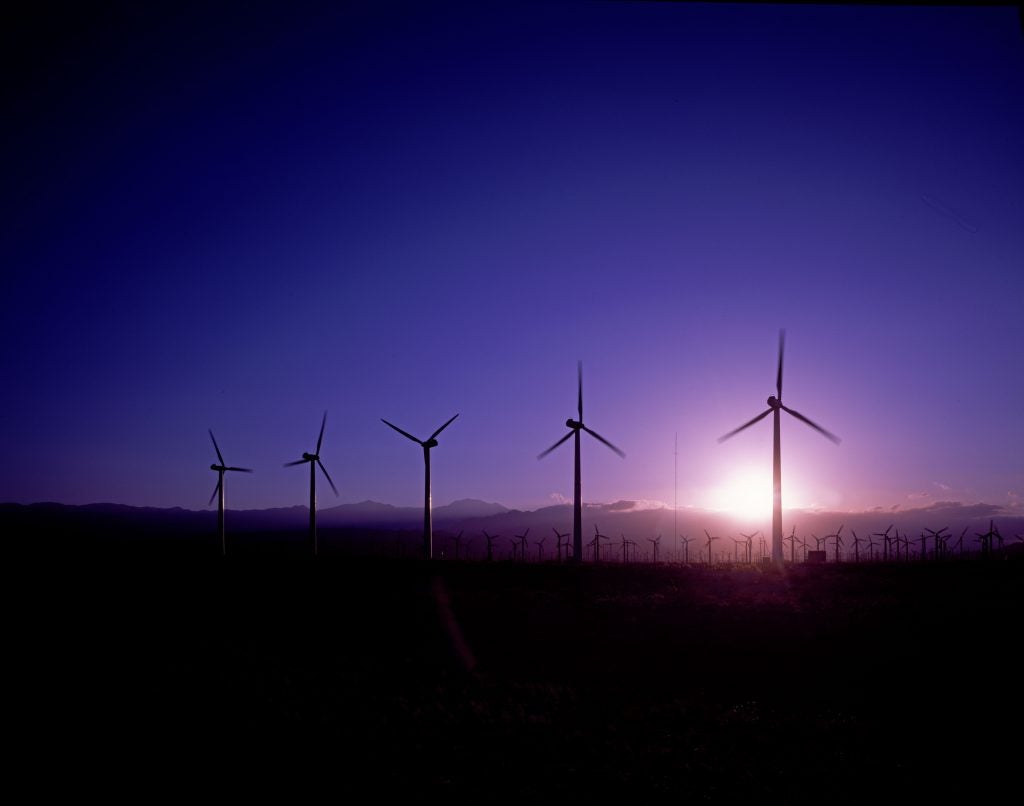
Wind farm in San Gorgonio Pass, California. Photo: Pxhere.com
This post was co-authored by Katelyn Roedner Sutter.
Results of the August 2019 California-Quebec carbon allowance auction were released today, and demonstrate that a strong and steady market is the status quo. These results come just weeks after the Newsom administration’s announcement that in 2017 the state’s total emissions were below the 2020 target for the second year in a row.
Today’s results in brief:
- All 66,289,515 current allowances sold, clearing at $17.16, $1.54 above the floor price of $15.62. This is $0.29 below the May 2019 clearing price of $17.45. As in the last auction, no previously unsold allowances were offered from California.
- All of the 9,038,000 future vintage allowances offered also sold at $16.85, $1.23 above the $15.62 floor price. These allowances are not available for use until 2022, demonstrating strong confidence in future market performance.
- The auction raised approximately $ 729 million USD for the Greenhouse Gas Reduction Fund, which allows California to invest in programs to improve local air quality and reduce emissions from buildings, agriculture and transportation.
- Quebec raised over approximately $ 248.75 million CAD (approximately $ 187 million USD), which funds local climate investments in the province.
These results demonstrate a couple of notable trends:
1. Allowance prices are rising overall, but slowed down slightly this quarter. The May 2019 auction cleared at a record-high price after a very active trading on the secondary market. The price is still higher this quarter than during the pre-May trend, but cleared slightly lower than in May. While we are used to seeing prices steadily increase (and overall they still are), the more noticeable jump in May might have caused some businesses to take a step back to see what was going to happen with allowance prices. That collective pause in the face of rising prices can cause the market to “cool off” a little. This is a normal market correction, and reflects the trend in the secondary market.
2. PG&E continues to sit out auctions. This is the third consecutive auction where the utility has not registered to participate, other than to consign their directly allocated allowances for the benefit of ratepayers. By not purchasing allowances at auction, PG&E could be artificially depressing the allowance price because of decreased demand. There is still much to sort out about PG&E’s future, but it seems likely that if they participate in the November auction to meet their annual compliance obligation, they would have significant demand for allowances. This could drive November’s prices higher, but we will need to see how PG&E’s bankruptcy process continues to play out.
The really big California climate news is reduced emissions
Earlier this month the Newsom administration released 2017 emissions data from the California Air Resources Board confirming that the state continues to reduce its greenhouse gas emissions while growing its economy. This is the fifth consecutive year of emission reductions, the second year in a row where emissions fell below the 2020 target, and the second year of a “head start” toward the even more ambitious 2030 goal. California’s continuing healthy economy demonstrates that the state does not have to choose between growth and cutting climate pollution.
By far the biggest contributor to this success is the electricity sector, where emissions fell by nine percent from 2016 to 2017. This is attributed to increased renewable energy resources and decreased dependence on fossil fuels. The agriculture sector also saw a decrease in emissions over the same time period, due at least in part to shifting irrigation methods.
Industrial sector emissions were overall constant between 2016 and 2017, but this is still the lowest emissions from this sector since 2009. We don’t have direct information on whether these industries are also increasing production; but given the increase in economic activity, flat emissions in the industrial sector likely mean businesses are able to lower the amount of emissions needed to produce a specific amount of goods. Commercial and residential building emissions increased slightly from 2016 to 2017, perhaps partially attributable to warmer weather or population patterns, such as more people moving to the Central Valley.
The most significant emissions challenge still comes from the transportation sector, where emissions continue to rise. However, there is possible good news as emissions increased more slowly from 2016 to 2017 than in previous years. Passenger vehicle emissions grew by less than 1% during this time, so we continue to look for the state to reach a turning point in the near future.
Looking forward: carbon neutrality
The Air Resources Board has been hosting a series of workshops exploring carbon neutrality in California, in response to Governor Brown’s September 2018 Executive Order calling for economy-wide carbon neutrality by 2045. While stakeholders consider what carbon neutrality will look like in various sectors of our state’s economy and how we get there, it is likely the carbon market has not started to respond to this goal yet because it is not in statute. If this 2045 target is passed by the Legislature and it becomes law, we could see an impact in demand for allowances as a goal beyond 2030 becomes clearer to regulated businesses. As we saw before SB 32 was adopted and set the 2030 emission reduction goal of 40% below 1990 levels, the market did not noticeably respond to targets until they were in law.
California would not be the first state to set a near zero mid-century target. Earlier this year, Colorado passed an ambitious climate bill that includes a commitment to achieve at least a 90% reduction below 2005 levels by 2050. EDF will continue to closely track the carbon neutrality conversations and also watch how the market responds.









